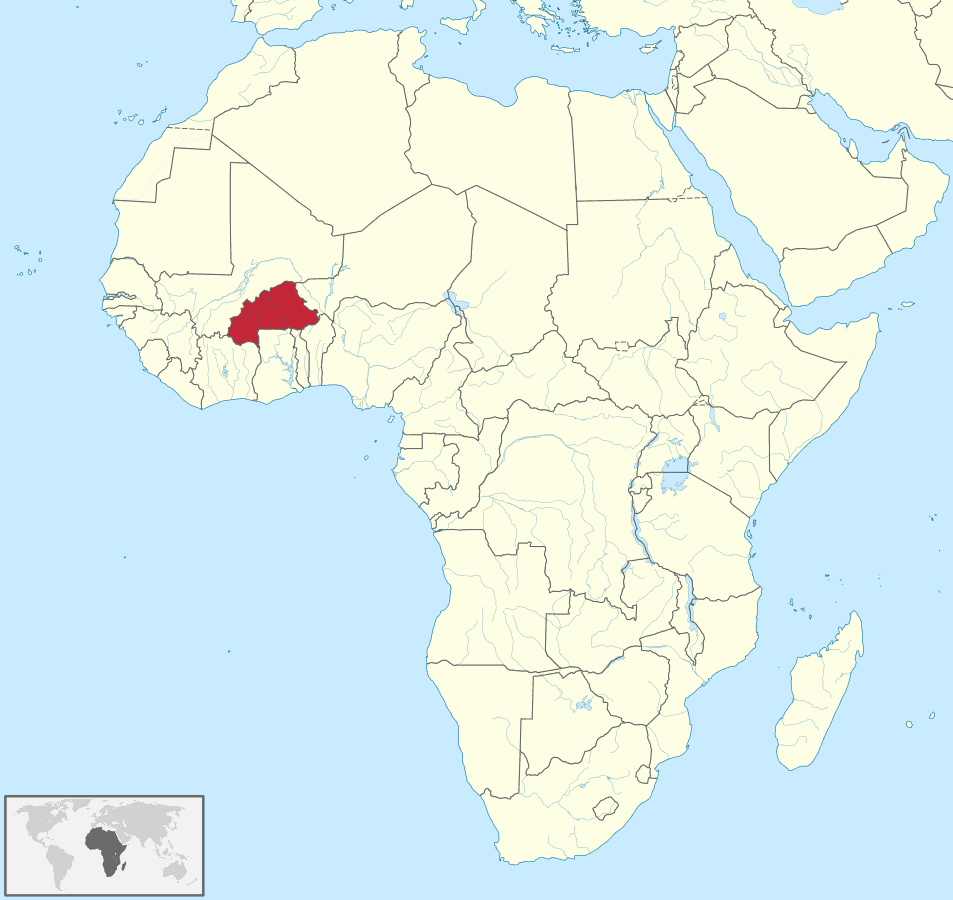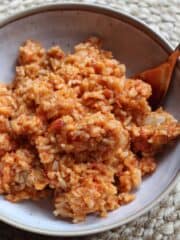Burkina Faso has similar cuisine to most countries in Western Africa. I finally decided on cooking Fat Rice and Hibiscus Tea from this country.
On the Menu
- Fat Rice (Rice with Tomatoes and Chicken)
- Hibiscus Tea
- Something else that I haven’t quite decided yet
Fun Facts
- Burkina Faso has a very high birth rate. Each family has, on average, 6 children
- Due to the high birth rate, a large majority of the country– about 65%– is under 25 years of age
- The white stallion is the national symbol of Burkina Faso. There is a common saying amongst the Fulani people about the Burkinabe love for horses: “a horse is your wife, your car, your colleague, your best friend.”

About the Flag and the Name
Red and green are colors that typically represent Pan-African countries. The red and green stripes on the flag represent the independence of the country as well as its unity with other African countries. The yellow star in the middle of the flag represents the “guiding light of the revolution.”
The word Burkina comes from mooré word meaning “honorable people,” and Faso comes from dioula language meaning fatherland. Translated, Burkina Faso means “the land of honorable people.”

Background of Burkina Faso
Burkina Faso is a landlocked country located in West Africa. It used to be called Upper Volta, and was part of French West Africa from 1896 until 1960. In 1960, The country gained independence, though it kept the name “Upper Volta.” It wasn’t until 1984 that the country changed its name to Burkina Faso. Due to the relatively recent French occupancy, French is still the native language of the country. The capital of the country is Ouagadougou.
The north of the country is in the dessert-like Sahel region, but as you go further south, it gets to be more forest-like. The dirt looks red in this country!

People of Burkina Faso
There are about 17 million people in Burkina Faso, and they are all called Burkinabes. About one half of the Burkinabe are Mossi people (an ethnic group in the country), and the other half is combination of other groups of people including, but not limited to, Gurma, Fulani, and Bobo. Each region of the country is distinguishable by the architecture of the ethinic group that lives there.
About 80% of the Burkinabe are subsistence farmers. Subsistence agriculture means that the farms are intended to provide sustenance solely for themselves and their families, and there is little to no surplus to trade. The people take great pride and joy in their agricultural work. Oftentimes, drummers will accompany farmers to make the day more enjoyable.


Economy
The farmers grow a lot of peanuts, millet, sorghum, etc, but the economy is centralized on cotton and gold. In fact, more cotton is produced in Burkina Faso than in any other African country. Farmers call cotton their “white gold,” as it earns them 200 million dollars in revenue each year. Despite this, most people in this country live off of one dollar a day.

Food in Burkina Faso
The food of Burkina Faso is very similar to the cuisines of other countries in Western Africa. As mentioned above, the people eat a lot of sorghum, millet, peanuts, and maize. For vegetables, the Burkinabe eat zucchini, yams, okra, pumpkins, spinach, onions, beets, cucumbers, tomatoes, and potatoes. The most commonly enjoyed meats are goat, lamb, poultry, mutton, beef, and fish.
Some common dishes include:
- Fat Rice: Rice made with tomatoes, onions, and a lot of oil
- Tô: Mashed sorghum or millet. This turn into balls of white starch that is the typical basis for most meals. The tô can be made into dumplings, as a basis for sauces or stews, or eaten like cakes
- Bissap: Hibiscus drink often served with pineapples
- Poulet Bicyclette: Chicken pieces that are tenderized in lemon juice for 24 hours before they are cooked. This dish gets its name from the carts that sell poulet bicyclette on the streets
- Babenda: Bitter greens cooked together with with fermented locust beans and smoked fish



